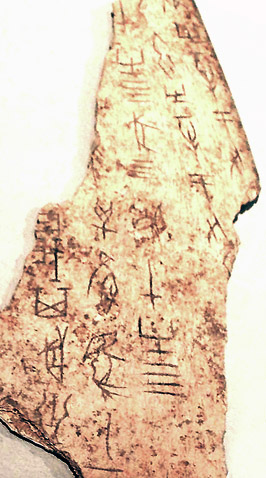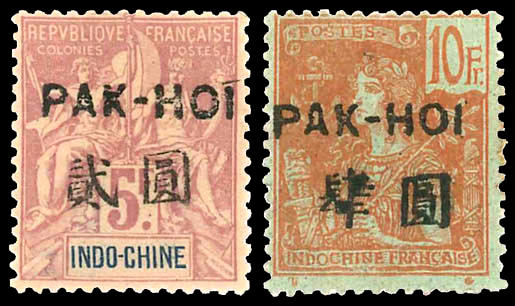|
Jiyuan
Jiyuan ( zh, s= , t=濟源 , p=Jìyuán) is a sub-prefecture-level city in northwestern Henan province, People's Republic of China. It borders the prefecture-level cities of Jiaozuo and Luoyang to the east and southwest respectively, as well as the province of Shanxi to the north. Administration The sub-prefecture-level city of Jiyuan administers 5 subdistrict and 11 towns. Jiyuan is named after the Ji river whose source is said to be a spring located on the west of the city. ;Subdistricts ;Towns Mythology *A famous Chinese mythology The Foolish Old Man Removes the Mountains may come from this area. Mountains mentioned in this myth are Taihang and Wangwu. History Jiyuan was a county belonging to Jiaozuo City in the past, then it was divided from the city. The former Ji River—one of the ancient "Four Rivers", alongside the Yangtze, Huai, and Yellow Rivers—originated around Jiyuan, which was the source of its name, Chinese for "Source of the Ji". (Today, the Ji ha ... [...More Info...] [...Related Items...] OR: [Wikipedia] [Google] [Baidu] |
Jiaozuo
Jiaozuo ( zh, s= , p=Jiāozuò ; postal: Tsiaotso) is a prefecture-level city in the northwest of Henan province, China. Sitting on the northern bank of the Yellow River, it borders the provincial capital of Zhengzhou to the south, Xinxiang to the east, Jiyuan to the west, Luoyang to the southwest, and the province of Shanxi to the north. Jiaozuo is one of the core cities of the Central Plains urban agglomeration and a regional central city along the Shanxi–Henan border area. Its population was 3,590,700 as of the 2018 estimate whom 1,424,500 lived in the built-up area made of 4 urban districts ( Jiefang, Shanyang, Zhongzhan and Macun) and Bo'ai County largely being urbanized. Administration The prefecture-level city of Jiaozuo administers 4 districts, 2 county-level cities and 4 counties. * Jiefang District * Shanyang District * Zhongzhan District * Macun District * Qinyang City * Mengzhou City *Xiuwu County * Wuzhi County * Wen County * Bo'ai County History ... [...More Info...] [...Related Items...] OR: [Wikipedia] [Google] [Baidu] |
Henan
Henan; alternatively Honan is a province in Central China. Henan is home to many heritage sites, including Yinxu, the ruins of the final capital of the Shang dynasty () and the Shaolin Temple. Four of the historical capitals of China, Luoyang, Anyang, Kaifeng and Zhengzhou, are in Henan. While the province's name means 'south of the river', approximately a quarter of the province lies north of the Yellow River. With an area of , Henan covers a large part of the fertile and densely populated North China Plain. Its neighboring provinces are Shaanxi, Shanxi, Hebei, Shandong, Anhui, and Hubei. Henan is China's third-most populous province and the most populous among inland provinces, with a population of over 99 million as of 2020. It is also the world's seventh-most populous administrative division; if it were a country by itself, Henan would be the 17th-most populous in the world, behind Egypt and Vietnam. People from Henan often suffer from regional discrimination ... [...More Info...] [...Related Items...] OR: [Wikipedia] [Google] [Baidu] |
Dayu, Jiyuan
Dayu () is a town under the administration of Jiyuan, Henan, China China, officially the People's Republic of China (PRC), is a country in East Asia. With population of China, a population exceeding 1.4 billion, it is the list of countries by population (United Nations), second-most populous country after .... , it administers the following 30 villages: * Qiaogou Village () * Luanshi Village () * Sanchahe Village () * Yanwahe Village () * Dougou Village () * Wangzhuang Village () * Huaiyin Village () * Xiankou Village () * Xuezhai Village () * Liyuan Village () * Donggou Village () * Silangyao Village () * Douyangou Village () * Linxian Village () * Zengzhuang Village () * Fangshan Village () * Fantouling Village () * Piankan Village () * Wangkeng Village () * Luling Village () * Zhao Village () * Dongling Village () * Dakuiling Village () * Caogou Village () * Shangzhai Village () * Zhonggudui Village () * Wangguai Village () * Xiaohengling Village () * Tangling Village () ... [...More Info...] [...Related Items...] OR: [Wikipedia] [Google] [Baidu] |
Yuquan Subdistrict, Jiyuan
Yuquan Subdistrict () is a subdistrict in Jiyuan, Henan, China. , it administers the following 25 residential neighborhoods: *Yaqiao () *Beiyantou () *Xishuitun () *Beishuitun () *Nanshuitun () *Gangtou () *Ximatou () *Zhongmatou () *Dongmatou () *Miaodian () *Jiuhezhuang () *Dongguo Road () *Xiguo Road () *Wangzhuang () *Shiniu New Village () *Baigou New Village () *Liuzhuang New Village () *Lujialing New Village () *Zhuyu New Village () *Duanzhuang () *Nanyantou () *Yaqiao Community () *Quanshuiwan Community () *Quanxing Community () *Quanhui Community () See also * List of township-level divisions of Henan This is a list of township-level divisions of the province of Henan, People's Republic of China (PRC). After province, prefecture, and county-level divisions, township-level divisions constitute the formal fourth-level administrative divisions ... References Township-level divisions of Henan Jiyuan {{Henan-geo-stub ... [...More Info...] [...Related Items...] OR: [Wikipedia] [Google] [Baidu] |
Sub-prefecture-level City
A sub-prefectural municipality (), sub-prefectural city, or vice-prefectural municipality, is an unofficial designation for a type of administrative division of China. A sub-prefectural city is officially considered to be a county-level city, but it has more power ''de facto'' because the cadres assigned to its government are one half-level higher in rank than those of an "ordinary" county-level city—though still lower than those of a prefecture-level city. While county-level cities are under the administrative jurisdiction of prefecture-level divisions, sub-prefectural cities are often (but not always) administered directly by the provincial government, with no intervening prefecture level administration. Examples of sub-prefectural cities that does not belong to any prefecture: Jiyuan (Henan Province), Xiantao, Qianjiang and Tianmen (Hubei), Shihezi, Tumxuk, Aral, and Wujiaqu (Xinjiang). Examples of sub-prefectural cities that nevertheless belong to a prefecture: Gol ... [...More Info...] [...Related Items...] OR: [Wikipedia] [Google] [Baidu] |
County-level City
A county-level city () is a County-level divisions of China, county-level administrative division of the China, People's Republic of China. County-level cities have judiciary, judicial but no legislature, legislative rights over their own local ordinance, local law and are usually governed by Administrative divisions of China#Prefectural level (2nd), prefecture-level divisions, but a few are governed directly by Administrative divisions of China#Provincial level (1st), province-level divisions. A county-level city is a "city" () and "county" () that have been merged into one unified jurisdiction. As such, it is simultaneously a city, which is a municipal entity, and a county, which is an administrative division of a prefecture. Most county-level cities were created in the 1980s and 1990s by replacing denser populated Counties of China, counties. County-level cities are not "city, cities" in the strictest sense of the word, since they usually contain rural areas many times the size ... [...More Info...] [...Related Items...] OR: [Wikipedia] [Google] [Baidu] |
Sub-prefecture-level City
A sub-prefectural municipality (), sub-prefectural city, or vice-prefectural municipality, is an unofficial designation for a type of administrative division of China. A sub-prefectural city is officially considered to be a county-level city, but it has more power ''de facto'' because the cadres assigned to its government are one half-level higher in rank than those of an "ordinary" county-level city—though still lower than those of a prefecture-level city. While county-level cities are under the administrative jurisdiction of prefecture-level divisions, sub-prefectural cities are often (but not always) administered directly by the provincial government, with no intervening prefecture level administration. Examples of sub-prefectural cities that does not belong to any prefecture: Jiyuan (Henan Province), Xiantao, Qianjiang and Tianmen (Hubei), Shihezi, Tumxuk, Aral, and Wujiaqu (Xinjiang). Examples of sub-prefectural cities that nevertheless belong to a prefecture: Gol ... [...More Info...] [...Related Items...] OR: [Wikipedia] [Google] [Baidu] |
Administrative Divisions Of The People's Republic Of China
The administrative divisions of China have consisted of several levels since 1412, due to mainland China's large population and geographical area. In the People's Republic of China, the constitution provides for three levels of government. However in practice, there are five levels of local government; the provincial (province, autonomous region, municipality, and special administrative region), prefecture, county, township, and village. Since the 17th century, provincial boundaries in mainland China have remained largely static. Major changes since then have been the reorganization of provinces in the northeast after the establishment of the People's Republic of China in 1949 and the formation of autonomous regions, based on Soviet ethnic policies. The provinces serve an important cultural role in China, as people tend to identify with their native province. Levels The Constitution of the People's Republic of China provides for three levels: the provincial, the county l ... [...More Info...] [...Related Items...] OR: [Wikipedia] [Google] [Baidu] |
Luoyang
Luoyang ( zh, s=洛阳, t=洛陽, p=Luòyáng) is a city located in the confluence area of the Luo River and the Yellow River in the west of Henan province, China. Governed as a prefecture-level city, it borders the provincial capital of Zhengzhou to the east, Pingdingshan to the southeast, Nanyang to the south, Sanmenxia to the west, Jiyuan to the north, and Jiaozuo to the northeast. As of December 31, 2018, Luoyang had a population of 6,888,500 inhabitants with 2,751,400 people living in the built-up (or metro) area made of the city's five out of six urban districts (except the Jili District not continuously urbanized) and Yanshi District, now being conurbated. By the end of 2022, Luoyang Municipality had jurisdiction over 7 municipal districts, 7 counties and 1 development zone. The permanent population is 7.079 million. Situated on the central plain of China, Luoyang is among the oldest cities in China and one of the cradles of Chinese civilization. It is the earl ... [...More Info...] [...Related Items...] OR: [Wikipedia] [Google] [Baidu] |
License Plate (China)
Vehicle registration plates in China are mandatory metal or plastic plates attached to motor vehicles in mainland China for official identification purposes. The vehicle registration plate, plates are issued by the local traffic management offices, which are sub-branches of local public security bureaus, under the rules of the Ministry of Public Security (China), Ministry of Public Security. Hong Kong and Macau, both of which are special administrative regions of China, issue their own licence plates, a legacy of when they were under British Hong Kong, British and Portuguese Macau, Portuguese administration. Vehicles from Hong Kong and Macau are required to apply for licence plates, usually from Guangdong province, to travel on roads in mainland China. Vehicles from mainland China have to apply for Vehicle registration plates of Hong Kong, Hong Kong licence plates or Vehicle registration plates of Macau, Macau licence plates to enter those territories. The font used are in the ... [...More Info...] [...Related Items...] OR: [Wikipedia] [Google] [Baidu] |
Beihai Subdistrict
Beihai (; Postal romanization: Pakhoi) is a prefecture-level city in the south of Guangxi, People's Republic of China. Its status as a seaport on the north shore of the Gulf of Tonkin has granted it historical importance as a port of international trade for Guangxi, Hunan, Hubei, Sichuan, Guizhou, and Yunnan. Between the years 2006 and 2020, Beihai was predicted to be the world's fastest growing city. Beihai has a large shipyard, but most of the money generated in the city is derived from trade. In addition, it governs the small islands of Weizhou and Xieyang, and is directly west of Leizhou Peninsula. Subdivisions Up to 2022, Beihai contains 3 districts and 1 county, which are subdivided into 7 urban sub-districts, 22 towns, 1 townships, 95 neighborhood committees, 336 village committees. (see also Administrative divisions of the People's Republic of China#Levels) * Haicheng District () * Yinhai District () * Tieshangang District () * Hepu County () History After ... [...More Info...] [...Related Items...] OR: [Wikipedia] [Google] [Baidu] |





